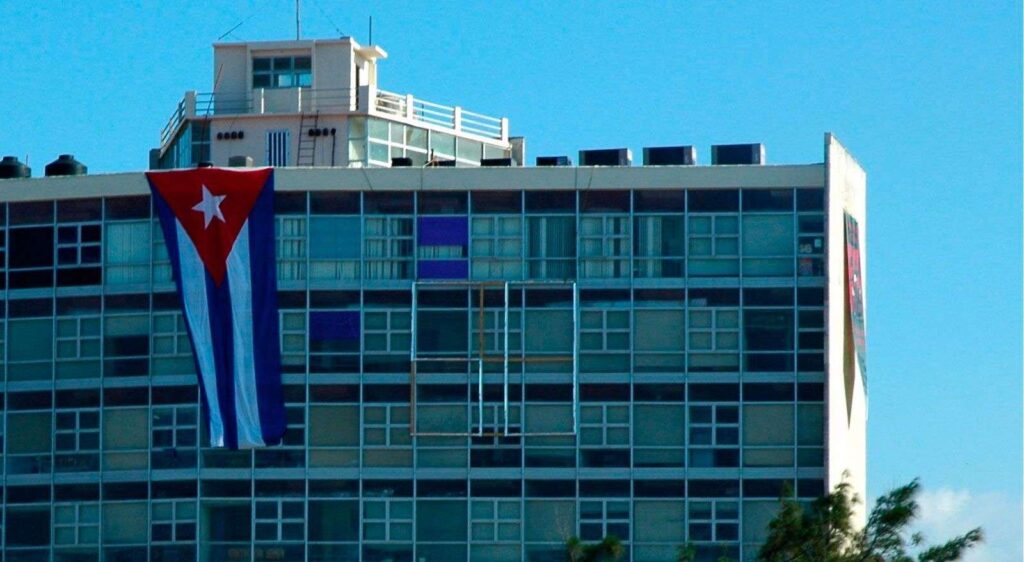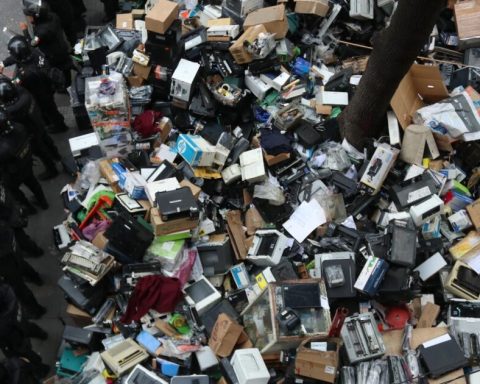Although it managed to double its oil exports in June, to 487,000 barrels per day (bpd), Venezuela reduced its deliveries to Cuba to just 9,740 bpd, well below the monthly average of 2021 (21,000), 2020 (44,000) and, especially everything, from the boom years when Hugo Chávez gave away 100,000 bpd to Havana.
TankerTrackers cites the InterAmerican Trends organization, which indicates that the Island received, last month, barely 2% of the total hydrocarbon exports made by Caracas.
According to these data, Cuba is the fourth destination for Venezuelan oil, but very far from China, which absorbs 80% of the crude. The next recipients were two newcomers to the Caracas market, Spain (13%) and Italy (5%). Both enter through an agreement with the Spanish companies Repsol and Italian Eni, authorized by the US to buy crude oil and gas to compensate for the crisis due to the embargo on Russian crude.
The export figures are still far from the goal set by Nicolás Maduro, who aspired to sell some 830,000 bpd on the international market and produce at least 2 million bpd, but substantially improves oil revenues, which this month were 612 million dollars net.
In addition to all the limitations of thermoelectric plants, distributed generation did not have 1,040 megawatts due to breakdown or another 384, due to maintenance in this case
The note also cites Iran as one of the recipients of Venezuelan crude, something that is common in its barter agreements, although the percentage acquired by Tehran is not specified on this occasion.
The Island has not managed to stabilize its energy situation and not only because less Venezuelan crude arrives, but also because the thermoelectric plants fed with national oil suffer a multitude of breakdowns. “Since last Friday night, the electricity service in the country has not been affected due to a deficit in generation capacity, but the situation of the National Electric System continues to be tense, and the evidence is in the low reserve levels reported daily by the Union Electric (UNE)”, indicates a note published this Monday in the official newspaper of the Communist Party, Granma.
Units 6, 7 and 8 of the Máximo Gómez thermoelectric power plant (CTE) in Mariel, the Otto Parellada unit in Havana, as well as Unit 4 of the CTE Diez are out of service due to breakdowns. of October, in Nuevitas, Camagüey”, continues the update, information that largely contradicts the words of the technical director of the UNE, who told Canal Caribe that there were no breakdowns in the thermoelectric plants in service.
“After tonight’s police report there has been a sharp increase in demand, which coincides with the turning on of fans and air conditioners. In several provinces, users of social networks report blackouts. Block 5 of Renté already has the boiler turned on, it is in the process of starting up, and in the next few hours it will synchronize. If you have power, contribute a little bit of savings so that others have it,” added official journalist Lázaro Manuel Alonso.
In addition, Unit 5 of the Antonio Maceo central plant, in Santiago de Cuba, was scheduled to return to the system during peak hours on Sunday, but the synchronization had not been carried out last night. Two other units, one at the Diez de Octubre thermoelectric plant and another at Lidio Ramón Pérez, in Holguín, were undergoing maintenance and are expected to return to the grid this week.
But in addition to all the limitations of thermoelectric plants, distributed generation did not have 1,040 megawatts due to failure or another 384, due to maintenance in this case.
The result is that, despite the relative reassurance offered by the headlines – some even sarcasticallysuch as Invader: Sunday without blackouts (expected) –, The questions on social networks were massive and dozens of people reported blackouts and prolonged power outages in the midst of the high summer heat.
The questions on social networks were massive and dozens of people reported blackouts and prolonged power outages in the midst of the high summer heat
Venezuelan oil shipments and foreign donations are of little use. This Thursday, important remittances of money destined to improve the generation of energy on the Island were known. Prensa Latina reported the signing of an agreement between the UNE and several Japanese companies to reinforce the energy capacity of Isla de la Juventud valued at 17, 5 million dollars.
With this money, Havana will be able to purchase fast-discharging battery systems that function as frequency regulators in photovoltaic or wind farms, a technology that will supposedly promote the use of renewable energies and limit the emission of polluting gases into the atmosphere. The signatory companies of the pact are Energoimport, Nishizawa Limited and Toshiba Energy Systems & Solutions Corporation, where the technology can be acquired through the non-reimbursable financial assistance system of the Japanese International Cooperation Agency with which other products have also been obtained, from syringes and medical supplies to the famous buses that took much longer than expected to join the Havana transport fleet.
In addition, the Russian agency Sputnik estimated last week at 2,300 million dollars the amounts delivered by Moscow to Havana from 2006 to 2019 in order to finance energy projects, in addition to the metallurgical and transportation industries, of which 1,360 were earmarked for the construction of a power plant, although the cost of a work of this magnitude can be up to ten times more, depending on its capacity.
To date, Cuba has focused on patching up an energy system that needs billion-dollar investments to completely change. Jorge Pinondirector of the Energy Program for Latin America and the Caribbean at the University of Texas, told Marti News this week that the government cannot continue “with this band-aid policy, of dealing with the thermoelectric generating plants that they now rent from Turkey… In other words, a structural recapitalization is needed.”
The expert, who analyzes the small investments that have been made with the help of Russia and China especially, considers that the solution is not in sight. “I see on the horizon the total collapse of the Cuban electrical system,” he affirms resoundingly.
________________________
Collaborate with our work:
The team of 14ymedio is committed to doing serious journalism that reflects the reality of deep Cuba. Thank you for joining us on this long road. We invite you to continue supporting us, but this time becoming a member of our newspaper. Together we can continue transforming journalism in Cuba.

















